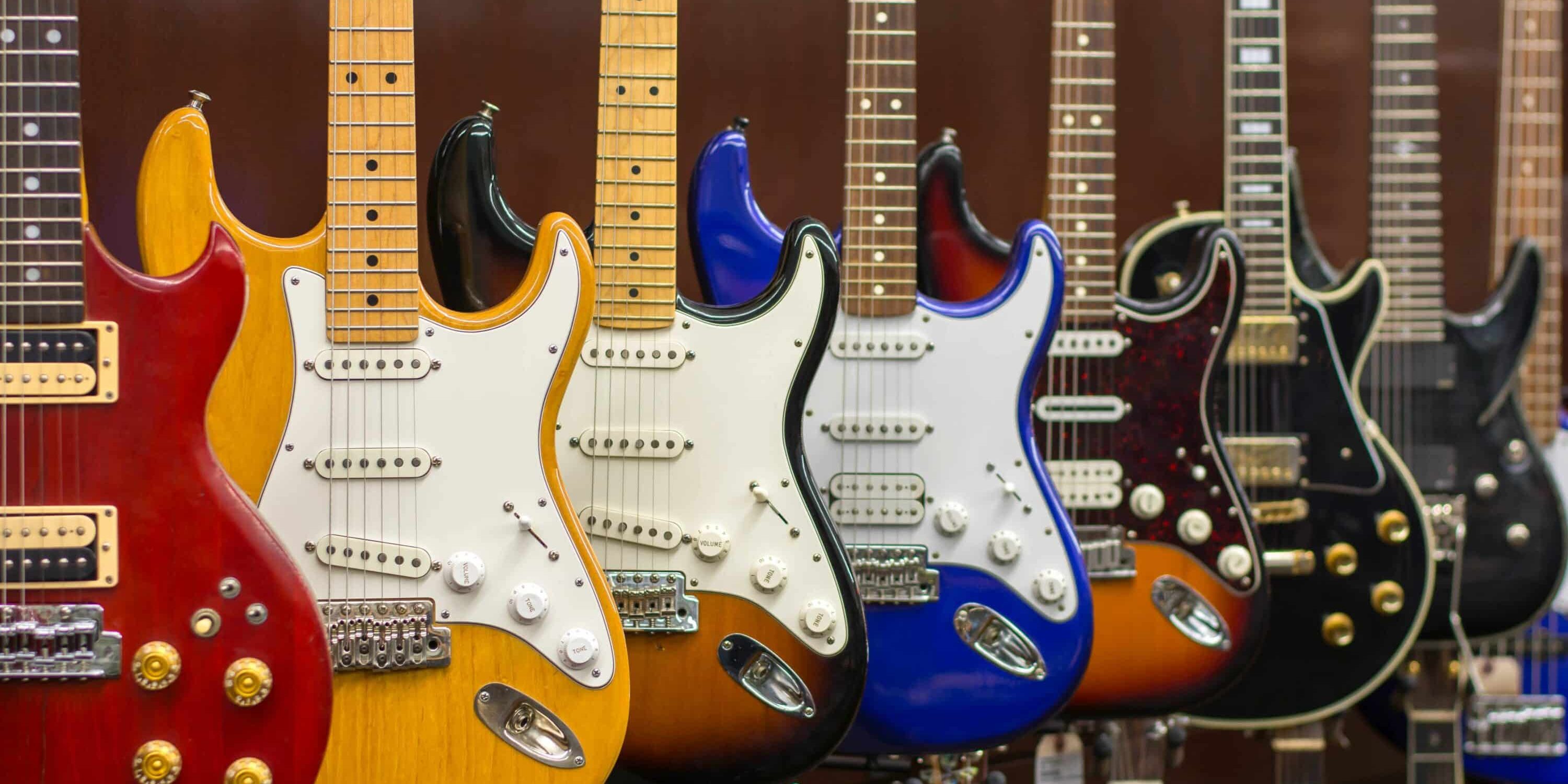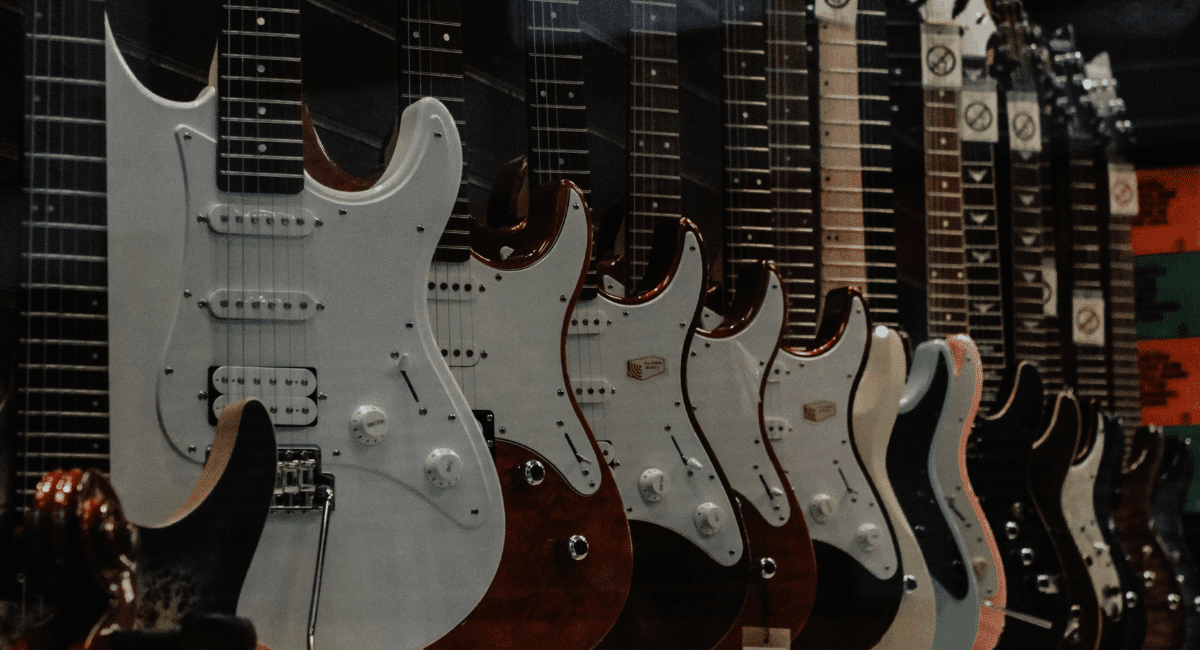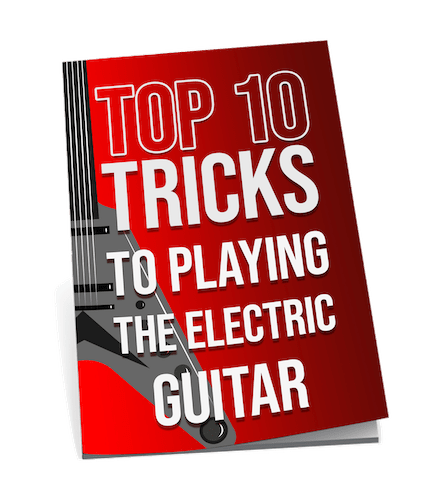Barely finding time to practice your electric guitar amid your hectic life?
Guess what? Just 30 minutes a day can send your guitar skills through the roof! It’s like a magic pill for your playing, minus the sketchy side effects.

Here’s the secret sauce to a quick and effective practice routine:
- 10 minutes on scales and warm-ups.
- 10 minutes tackling that new song.
- 10 minutes for improvisation and fun.
With this method, you can shred like the pros and still have time for the rest of your day. Find out more about how!
Mastering the Daily Warm-Up

Before you start playing:
- Warm up for about 10 minutes with easy finger exercises.
- Begin with chromatic scales to get your fingers moving.
- Use a metronome to keep your timing tight – it’s your secret weapon!
End your warm-up by practicing some basic chord changes. Switch between G, C, and D chords smoothly. This makes your fingers stronger and faster.
When you’re not playing, try squeezing a stress ball. It’s like lifting weights for your fingers. Never skip your warm-up—it’s like starting a car in winter!
Perfecting Power Chords

After that, spend 10 minutes on power chords. Power chords are super important in many rock music, so you have to get them right.
Start on the fifth string and play A5, then move up and down the fretboard. Do the same on the sixth string for E5.
Learn how to mute the strings you’re not using with your fingers, making you sound more professional. Muffle those extra, noisy strings for a cleaner sound.
Don’t rush yourself. Focus on being accurate, not fast. It’s not about how quickly you can play but how good it sounds.
Riffing with Rhythmic Precision

For the last 10 minutes, jump into riffs by picking one you love and copying it. Start slow and gradually speed up using a metronome to build muscle memory while keeping your timing on point.
Pay attention to syncopation and strumming patterns to add style to your playing. Practice both downstrokes and upstrokes to keep your strumming hand lively and flexible.
Try recording yourself during practice and listen back to spot areas for improvement. Remember, adding finesse to your riffs can make you sound like a guitar legend!
Doing Solos and Nifty Tricks

Mastering your electric guitar solos with precision is essential. Learn how to bend strings, navigate the fretboard, use impactful vibrato, and slide smoothly into melodic sequences.
Bending Strings
String bending makes your playing more expressive. Pick a comfortable spot on the fretboard, like the 7th fret of the G string. Press down and push the string up or pull it down.
Practice bending to reach a specific pitch. Using a tuner helps make sure you’re accurate.
Spending ten minutes daily on string bending can make a huge difference. Focus on making smooth transitions and avoiding pitchy sounds. Keep at it; soon, you’ll be bending strings like your favorite guitar heroes.
Navigating the Fretboard
The fretboard can seem like a confusing map. Start with the basics:
- Learn the notes all over the fretboard and practice scales like the minor pentatonic.
- Break it into easy chunks, spending five minutes on one section before moving to another.
- Picture the patterns and connect them in your mind.
The more you explore, the easier it gets to move around smoothly, just like cruising down your local highway.
Vibrato
Vibrato adds a feeling to your playing. Put your finger down firmly, then quickly move it back and forth. Spend ten minutes a day practicing slow, controlled vibrato.
Slowly increase your speed while staying in control. Vibrato can make notes, sing with emotion, or shake with intensity. Mastering this can make your solos more expressive and engaging.
Sliding into DMs (Dazzling Melodies)
Sliding between notes can be both flashy and smooth. Begin with simple slides, like from the 3rd to the 5th fret on the A string.
Focus on smooth transitions. Spend five minutes each day practicing slides up and down the neck.
Combine slides with bending and vibrato for unique effects. Gradually, your solos will glide effortlessly, making them sound polished and professional.
THE TOP 3 BEST BEGINNER ELECTRIC GUITARS
ESP Guitars EC-401

PERFECT FOR: professionals and beginners
FEATURES: It's loaded with an EMG 81 pickup and an EMG 60 pickup. Together they work as a powerful pickup combination fit for rock tones.
OTHER INFO: The mahogany body provides excellent resonance and enhanced sound quality.
ESP Guitars EC-401
- The durable body offers a good feel.
- It has a good pickup that, in turn, provides the right tone.
- Solid electronics offer a long-lasting impact.
- Sometimes, the sound quality could be better, which makes it dull.
- Fret buzz is a common issue.
- It's heavy.
When you click ‘Check Price’, you’ll see there are loads of great places to buy this item. Our personal favorite is Sweetwater for the US, and Thomann and Gear4Music for the UK & Europe.
They are the largest music retailers, with excellent customer service, competitive prices, really fast shipping, and the longest guarantees.
The professional musician who wrote this article combined many things,
from the product build, manufacturer’s reputation through to feedback
from other users, to create our famous TedScore™.
Squier Bullet Mustang HH, Black

FEATURES: Scale Length: 24"
OTHER INFO: Fretboard: Laurel
- Great value for its price.
- Comfortable design
- Two humbucking pickups for various genres.
- Easier playability, especially for beginners.
- Iconic association with musicians like Kurt Cobain.
- May feel too small for some players
- Suited for distorted tones, not ideal for pristine sound.
When you click ‘Check Price’, you’ll see there are loads of great places to buy this item. Our personal favorite is Sweetwater for the US, and Thomann and Gear4Music for the UK & Europe.
They are the largest music retailers, with excellent customer service, competitive prices, really fast shipping, and the longest guarantees.
The professional musician who wrote this article combined many things,
from the product build, manufacturer’s reputation through to feedback
from other users, to create our famous TedScore™.
SubZero Generation 7 Electric Guitar, 7-String

FEATURES: Scale Length: 27
OTHER INFO: 10-56 String Gauge
- Affordable price point at $177 USD for a 7-string multiscale guitar
- Solid construction with minor finish issues and no major damage
- Quick and easy adjustments with included allen key for leveling strings
- Playable and comfortable, particularly for the price
- Good potential for improvement with upgrades (pickups, locking tuners, pots)
- Minor finish issues and a flat finish, though within expectations
- Dry fretboard, but expected to be resolved with a setup
When you click ‘Check Price’, you’ll see there are loads of great places to buy this item. Our personal favorite is Sweetwater for the US, and Thomann and Gear4Music for the UK & Europe.
They are the largest music retailers, with excellent customer service, competitive prices, really fast shipping, and the longest guarantees.
The professional musician who wrote this article combined many things,
from the product build, manufacturer’s reputation through to feedback
from other users, to create our famous TedScore™.
Enhance your Guitar Skills-
The Overview

So there you have it, just 30 minutes daily – like the espresso shot of guitar practice. Who knew that just 30 minutes a day could turn you into a guitar legend? Well, maybe not a legend, but certainly much better than yesterday!
Start with a 10-minute warm-up. Finger exercises are like stretching before a run. Nobody wants a cramped finger.
Then, spend 10 minutes on technique drills. Speed picking, hammer-ons, pull-offs, and scales. It’s like lifting weights but less sweaty.
Next, jam for 10 minutes to a backing track. It’s practice, but make it fun. Finally, cool down of chord transitions. Smooth and steady wins the race.
So there you have it. A daily routine that’s shorter than an episode of your favorite sitcom. Now, rock those strings!











Regarding the section on doing solos and nifty tricks, I have to say, teaching beginners about bending strings and using vibrato might be a bit advanced too soon, don’t you think? While mastering these can indeed elevate one’s playing dramatically, I believe focusing too much on these techniques early on might detract from learning fundamental rhythms and chord progressions, which are crucial. Anyone else think there’s a more structured way to introduce these concepts?
I’ve been considering getting an electric guitar for a while, so I loved reading about the top 3 best electric guitars for beginners. But I’m super curious about the difference in feel and playability between each. I’m leaning towards a model that’s known for its ease of use since I’m just starting out. Does anyone have experiences they can share? Also, how crucial is the weight of the guitar for day-long practice sessions?
Riffing with rhythmic precision? I can’t even riff my way out of a paper bag, lol.
Hey Cai Isfryn, got a sec? I’m kind of new to the electric guitar world. I really appreciated the breakdown on mastering daily warm-ups. Do you think adding finger stretching exercises before starting the warm-up could help improve flexibility, or is it more about getting right into the strumming and fretting?
Yep, stretching is key 👍
Alex T., finger stretching is a great idea! Helps prevent injuries and definitely improves your play over time. Stick with it!